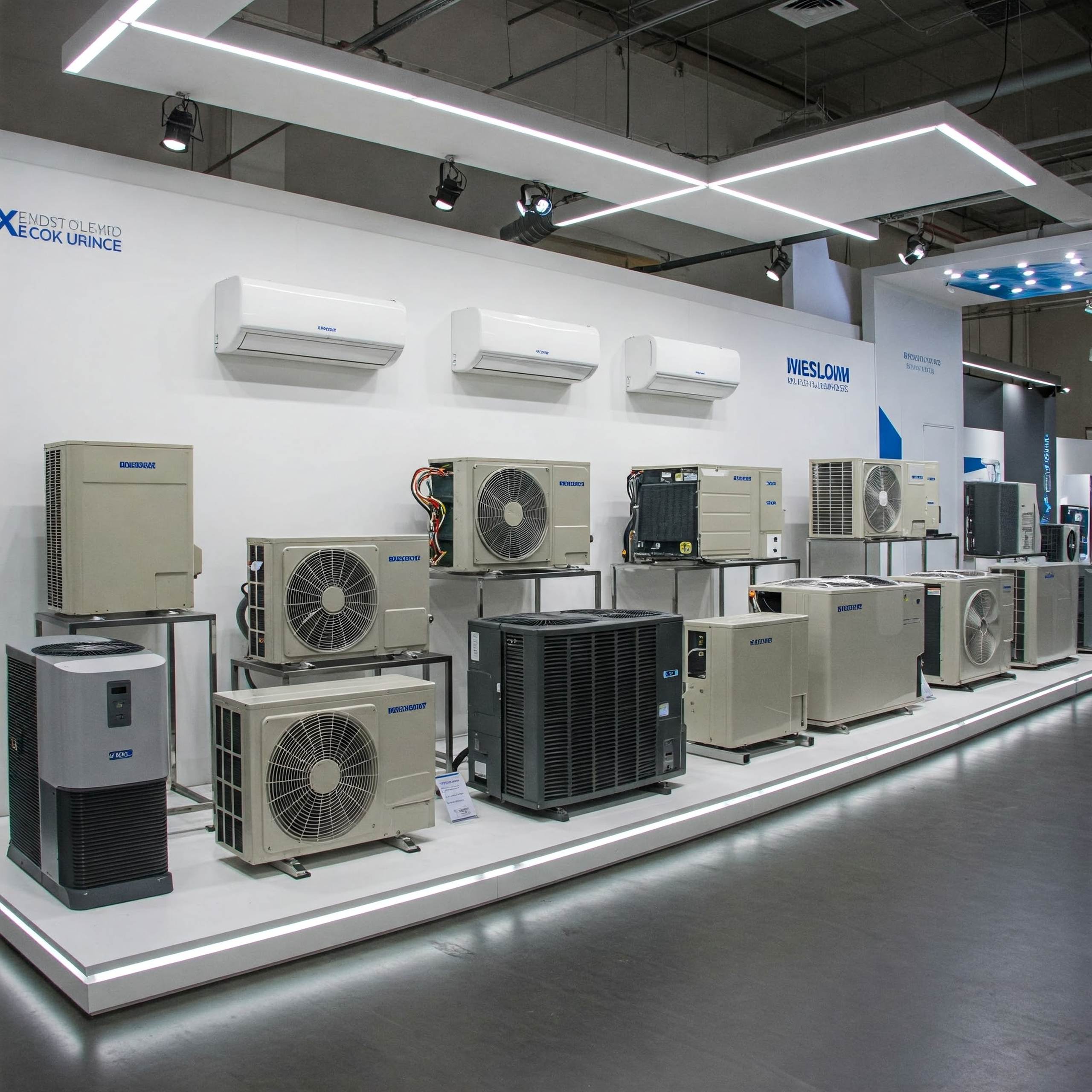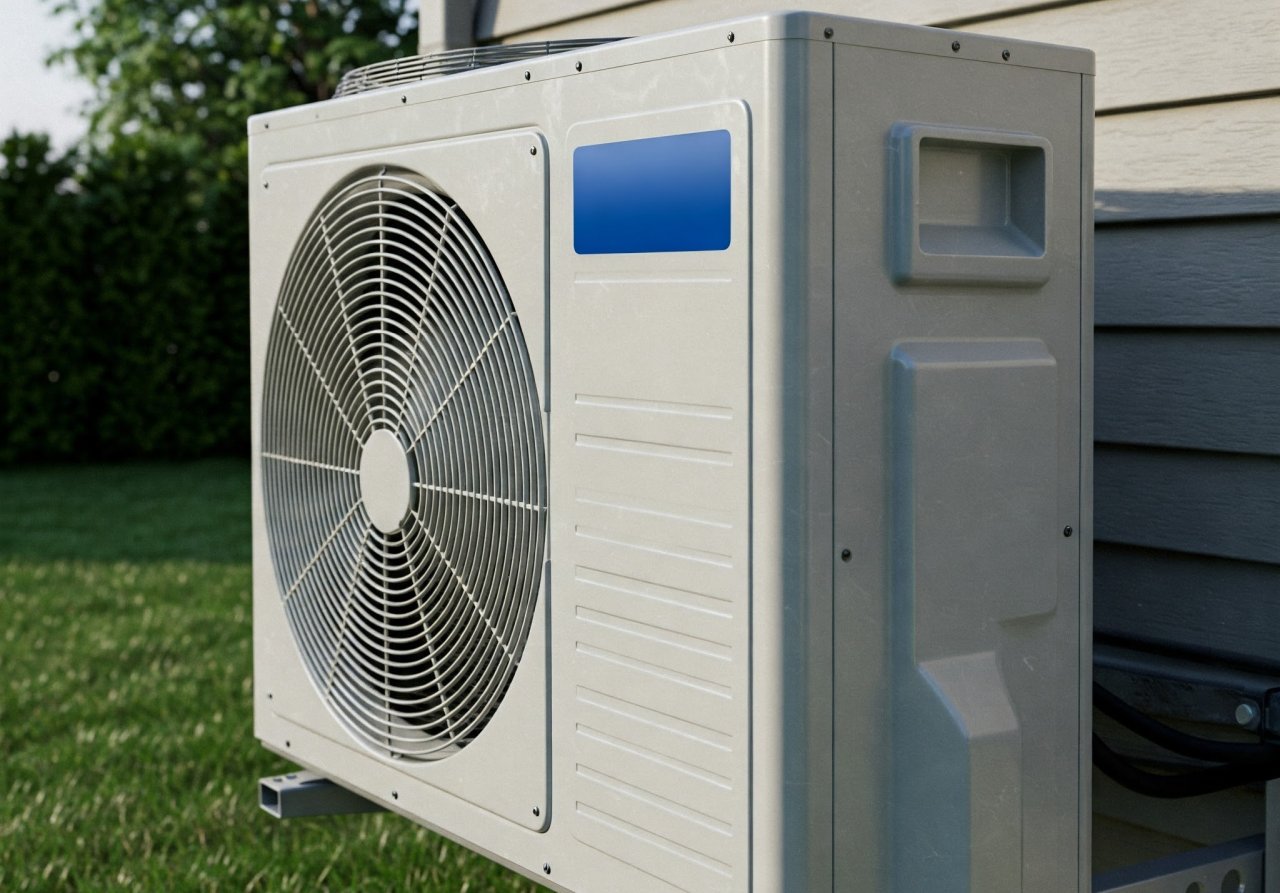If you’re comparing new air conditioning units, one of the most basic considerations is size. Correct AC sizing will help your system keep your home cool in the summer months efficiently without inflating your electricity bills.
Mistakes with AC sizing can lead to cooling and comfort issues, higher electricity bills, and a shorter life for your AC.
Let’s look at what you need to know about BTUs, AC tonnage, and how to calculate the ideal AC unit size for your home.
What Size Air Conditioner Do I Need?
There’s no “one-size-fits-all” with air conditioners. The required size depends on multiple factors, including the home’s square footage, ceiling heights, insulation, sun exposure, number of occupants, etc. After you understand how AC units are sized, booking an energy audit with an HVAC professional will help you select the right unit.
We go into more detail below to help you identify the ideal cooling system for your home…
MAKE THE RIGHT HEATING & COOLING DECISIONS…
For over two decades, Alberta Mountain Air has helped Calgarians solve heating and cooling problems and maintain ideal comfort levels. Get in touch online for a quote.
How are Air Conditioners Sized?
With a fluctuating climate, so many different AC models and features to choose from, and varying efficiencies and price points, choosing a new AC unit can be daunting.
One of the basics with air conditioners is sizing. This refers to cooling capacity rather than the physical size of the unit. Air conditioning units are measured in British Thermal Units (BTUs). One BTU equals the amount of energy needed to raise or lower the temperature of one pound of water by 1ºF.
In air conditioning terms, BTU refers to the quantity of energy used to remove heat from an area in an hour.
Air conditioners and heat pumps move energy from one place to another in a heat transfer process. The BTU rating of an AC unit tells us its power. For instance, a 12,000 BTU unit can remove 12,000 BTUs of heat from a room in an hour but a more powerful unit rated 16,000 BTUs can remove one-third MORE heat from a room. If all else is equal, the larger the space, the higher the BTU rating is required.
Ductless vs Central AC Sizing
Typically, central AC units for Alberta homes range in size from around 18,000 BTU to 60,000 BTU per unit. Ductless mini-split systems, which cool individual rooms, usually range from around 8,000 to 24,000 BTU per unit.
Window systems are rarely used nowadays in Calgary but relatively low-power units may be found cooling very small rooms.
AC Sizing Guidelines by Square Footage
The most basic consideration when sizing air conditioners is the size of the room (in the case of ductless AC units) or home (for central air conditioners).
BTU requirements are calculated based on a room’s square footage (multiply the length and width of the room in feet). The US Department of Energy recommends 20 BTU per square foot of living space for homes with standard ceiling heights.
With some minor adjustments for the climate in Calgary, we can use the following as a guideline for homeowners:
- 18,000 to 20,000 BTU per 1,000 sq. ft., or
- 18 to 20 BTU per square foot
So, 9,000 to 10,000 BTU is required for a 500-square-foot room, while central air conditioning with a unit of 48,000 BTU should be adequate for 2,100 to 2,400 square feet of space.
The following air conditioning sizing chart can act as a basic guide to the standard requirements in Calgary:
|
APPROX. COOLING AREA |
BTU RATING |
|
150-300 sq. ft. |
6,000 BTU |
|
400-600 sq. ft. |
8,000 – 12,000 BTU |
|
600-900 sq. ft. |
12,000 – 18,000 BTU |
|
900-1,200 sq. ft. |
18,000 – 24,000 BTU |
|
1,200-1,500 sq. ft. |
24,000 – 30,000 BTU |
|
1,500-1,800 sq. ft. |
30,000 – 36,000 BTU |
|
2,100-2,400 sq. ft. |
42,000 – 48,000 BTU |
|
2,700–3,000 sq. ft. |
54,000 – 60,000 BTU |
The average home size in Calgary is just under 1,500 square feet. So, a central air conditioner should usually have a rating of 30,000 to 36,000 BTU for adequate cooling capacity. However, other considerations come into play before going out and buying an AC unit…
Considerations Besides Sq. Ft. When Sizing AC Units
Square footage is not the only consideration when sizing AC. We also need to consider the following:
- Ceiling height—high ceilings (over 8 feet) may require additional cooling capacity.
- Room layout—open-plan home designs have different cooling requirements from homes with more enclosed spaces, and multi-level homes may require a different cooling setup than single-level homes, for example.
- Insulation quality—well-insulated homes can sometimes get by with lower cooling capacity than a home where the cool air escapes easily.
- Sun exposure and number of windows—a home that receives a lot of sunshine through many windows will require additional cooling capacity.
- Occupancy—a house with more occupants often requires a larger air conditioner as people create heat.
- Number of appliances running—appliances also generate heat, so running fewer devices can lower the AC size requirements in a home, if all else is equal.
- The local climate—locations that experience high temperatures and high humidity for many months of the year require more cooling capacity than homes with shorter cooling seasons and less extreme conditions (for instance, Florida homes require greater cooling capacity than homes in Alberta).
What is AC Tonnage?
AC unit sizes may also be specified in tonnage. This is not a measure of the unit’s weight but its cooling capacity. This table explains how BTU converts to tonnage when sizing an air conditioner (one ton = 12,000 BTU):
|
BTU RATING |
TONNAGE |
|
6,000 BTU |
0.5 Ton |
|
12,000 BTU |
1 Ton |
|
18,000 BTU |
1.5 Tons |
|
24,000 BTU |
2 Tons |
|
30,000 BTU |
2.5 Tons |
|
36,000 BTU |
3 Tons |
|
48,000 BTU |
4 Tons |
|
60,000 BTU |
5 Tons |
What Happens If You Install the Wrong Size AC?
With AC units, size matters greatly: an air conditioner with inadequate cooling capacity will run at maximum power but still not reach the desired comfort level, while an oversized unit will usually have a shorter life due to short-cycling.
Here’s a summary of the potential issues with both oversizing and undersizing your AC:
Oversized AC problems:
- Inflated energy costs.
- Short cycling, i.e., running the cooling cycle frequently for short periods.
- Inadequately cooling the home if the compressor shuts off too soon.
- Increasing humidity in the space.
- Increasing wear and tear on parts due to short cycling.
- Shortening the lifespan of the AC unit.
Undersized AC problems:
- Inflated energy costs.
- Running for too long.
- Never sufficiently cooling your home.
- Creating uneven temperatures in some rooms.
How to Calculate the Right Size AC for Your Space
Have you decided it’s the right time to replace your AC unit? Where do you start with calculating the right size for your space?
The cost of AC in Calgary is significant, so sizing the unit correctly and maintaining it once installed should be priorities to protect your investment.
The above table can act as a BTU calculator based on the home’s square footage and will provide a basic indication of size, but relying on this alone can lead to problems.
The recommended starting place is an assessment of your home’s energy needs. This will include a professional load calculation that considers the square footage of the space, insulation, windows, sun exposure, construction materials, air leakage, occupancy, appliances and lighting, ductwork, etc.
A Manual J calculation is the official HVAC industry method used to determine the exact heating and cooling needs of a building or room. It analyzes many factors to determine:
- Cooling Load (how much AC you need, in BTU)
- Heating Load (how much heat you need, in BTU)
So, as well as sizing the air conditioner you need, a Manual J will help you correctly size a heat pump or furnace, too.
Most professional HVAC companies will be able to help with a Manual J Calculation to assess your home’s energy requirements.
FAQs
The BTU rating itself does not determine the efficiency of an air conditioner, but it plays an important role in how efficiently the system operates when correctly matched to the space. The energy efficiency of AC units is usually measured in SEER (Seasonal Energy Efficiency Ratio). A unit with a higher rating consumes less energy than a counterpart with the same BTU and lower energy efficiency rating.
A correctly sized and well-maintained AC system should run for approximately 15 to 20 minutes, two or three times every hour, when turned on.
That depends on your home’s square footage, insulation, ceiling heights, sun exposure, number of occupants, and other factors. A more powerful AC unit will provide more cooling power but an oversized unit can also create inefficiencies.
If you’re investing in a new central AC unit or ductless mini-split system in Calgary, you can expect it to last around 15-20 years, but only if properly maintained. Calgary’s generally mild summer climate and limited annual use contribute to a longer lifespan than average in North America.
Get the Right Size Air Conditioner Installed…
Sizing an air conditioner correctly is more involved than punching a few numbers into a formula or checking the home’s square footage against a table.
For an efficient AC system that functions at peak all year round, size and install your unit professionally and book annual AC maintenance.
All HVAC professionals at Alberta Mountain Air are SAIT-certified and can help you make the right heating and cooling decisions. So, if you’re in Calgary and considering your options, contact us online.















